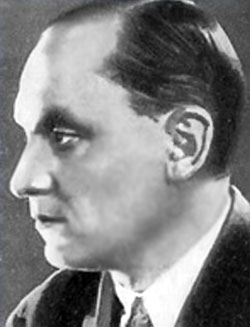The story of Soviet science fiction cinema has got considerably more attention in popular circles than it has in academic circles and one finds occasional blog pieces on films which have been almost totally ignored in histories of Soviet cinema. It has been a genre left to the enthusiasts rather than the scholars. Of course there are the films by the likes of Tarkovsky and Lopushanksy as well as the earlier Protazanov Soviet science fiction debut Аэлита (Aelita, 1924), the Stalin era Космический рейс (The Space Voyage, 1936) and the cult Daneliya film Кин-дза-дза (Kin-Dza-Dza) which have been commented on and analyzed by film buffs and scholars alike but the scope of Soviet science fiction hasn't had its comprehensive monograph. Again science fiction can surely not be relegated to space travel as most accounts and recent retrospectives seem to have done. For each Aelita or Межпланетная революция (Interplanetary revolution, 1924) - incidentally, also based on Aleksei Tolstoy's novel there were other science fiction fantasies.
Flights to space were accompanied with fears of new weapons of warfare- especially chemical warfare. Therefore, Kuleshov's 1918 Проект инженера Прайта (The Project of Engineer Prite) should surely be seen as being the original film of Soviet science fiction. His later Луч смерти (Death Ray, 1925) was a continuation of this theme in Kuleshov's filmography:
The mid 1920s seem to be a prolific time for this theme of chemical warfare- Semyon Timoshchenko's film about an imperialist chemical warfare attack on Наполеон-газ (Napoleon Gas, 1925) Leningrad was almost replicated in Barnet and Otsep's Мисс Менд (Miss Mend, 1926) in which three American reporters try to stop a biological attack on the Soviet Union by powerful American businessmen:
It was only later that space travel overtook chemical warfare paranoia's as the dominant theme in Soviet science fiction.
Among the Soviet science fiction films of the 1920s that have been lost are the following :
Nikolai Petrov's Аэро НТ-54 (Aero NT-54) about the development of a powerful aeroplane engine around which a furious struggle took place (between capitalist countries and the Soviet Union?)- the film was made in 1925 but withdrawn in 1928 (it's uncertain whether due to questions of quality or ideology). The scriptwriter Nikolai Surovtsev based it on a thriller of his own.
Another 1925 film by Yakov Morin called Коммунит (and also Русский газ) and was based on the idea of the invention yet again of a paralyzing gas this time to be used to defend Soviet Russia from imperialist invaders.
Before the 1920s, in 1919 film fragments of a science fiction version of Jack London's Iron Heel based on a script by Lunacharsky were shown during a theatrical show. Existing reviews of this were quite positive, although none of the fragments have survived. The fragments were filmed by a number of directors including Vladimir gardin and Olga Preobrazhenskaya.









































